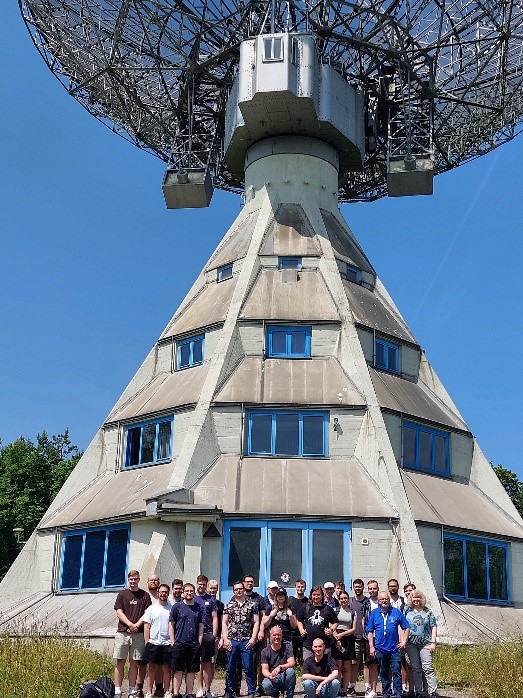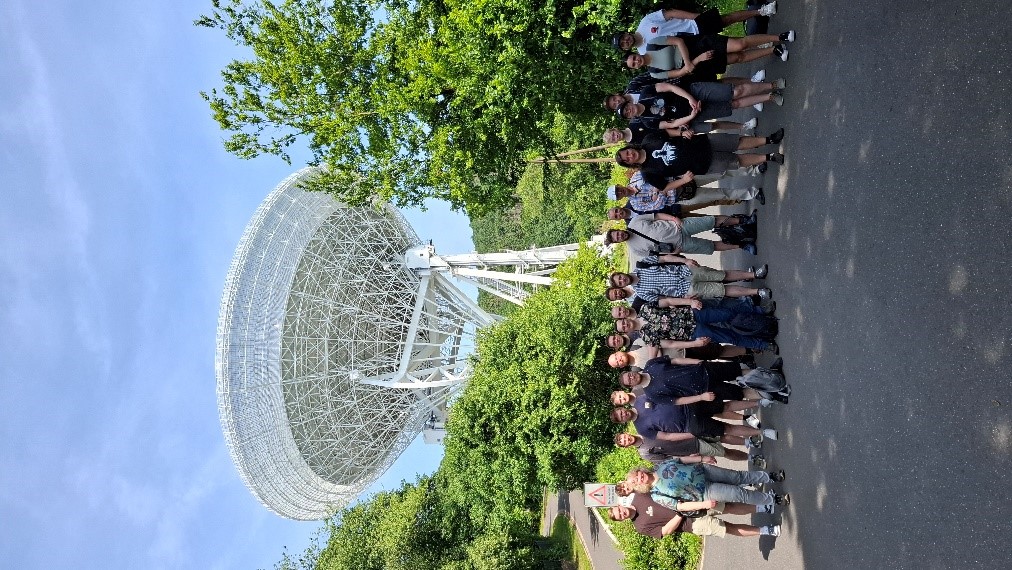Practical Insights into Modern Astronomy and Signal Interference Analysis
As part of the course “Methods and Tools of Modern Astronomy”, over 20 students from the Media Communication and Computer Science B.Sc. programme had the chance to engage with contemporary radio astronomy techniques, spanning from historic instruments to advanced research facilities.
The course commenced with a visit to the Astropeiler Stockert radio observatory in the Eifel region. This 25-metre radio telescope, Germany’s first fully steerable radio telescope built in 1956, remains operational today using modern technology for scientific research. Following an introductory lecture on its history and radio astronomy fundamentals, students observed a live pulsar measurement. They also measured radiation from the Milky Way, providing a practical demonstration of our galaxy’s structure.
Next, the group toured the 100-metre Effelsberg radio telescope, one of the largest and most powerful worldwide, operated by the Max Planck Institute for Radio Astronomy in Bonn. Access to the elevation platform offered an up-close view of the vast parabolic dish and a sense of the scale of contemporary astronomical infrastructure. Students received in-depth information about ongoing research and the technical systems employed.
Two weeks later, students continued their hands-on experience on the campus of Rhine-Waal University of Applied Sciences in Kamp-Lintfort. Here, they conducted measurements with the university’s 2.3-metre radio telescope, focusing on the analysis and interpretation of astronomical data.
This practical training was complemented by a visit to a measurement vehicle from the inspection and measurement service of the Bundesnetzagentur at its Rheurdt branch. The session concentrated on identifying interference signals from artificial sources, which can affect radio astronomy data even within frequency bands designated for scientific use. The demonstration highlighted the vulnerability of astronomical observations to technical disruptions and underscored the importance of precise monitoring.

The students were highly engaged with the variety of measurement techniques and enjoyed applying theoretical concepts in a practical setting. Under the guidance of Dr Monika Marx-Zimmer and Prof Dr Frank Zimmer, the course clearly demonstrated how hands-on, research-driven teaching helps develop essential skills.


